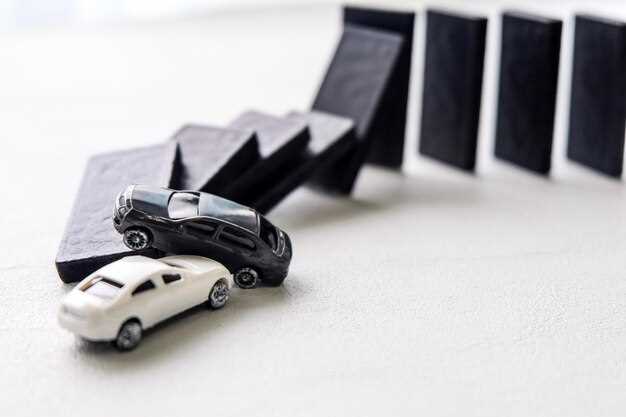
When it comes to insuring salvage cars, understanding the different types of coverage options is essential for both financial protection and compliance with legal requirements. Salvage cars, often deemed a total loss due to accidents or severe damage, present unique challenges in the insurance realm. These vehicles can be restored and put back on the road, but they require specific considerations to ensure adequate coverage.
One of the primary types of coverage for salvage vehicles is liability insurance, which is crucial for meeting state-mandated requirements. This type of insurance provides protection against claims resulting from injuries or damage to other people or property caused by the insured vehicle. However, due to the nature of salvage cars, obtaining liability coverage can be more complicated than with standard vehicles, as insurers may have differing policies regarding their eligibility.
In addition to liability coverage, other options such as comprehensive and collision coverage can also be considered. These choices allow owners to protect their investment in the salvage car while enabling them to drive it legally and safely. Understanding the nuances of each coverage type ensures that owners can make informed decisions tailored to their specific needs and circumstances.
Understanding Liability Coverage for Salvage Vehicles
Liability coverage is a critical component of any automobile insurance policy, including those for salvage vehicles. This type of coverage protects the insured from financial responsibility in the event they are found at fault for causing an accident that results in injury or property damage to others. For owners of salvage cars, understanding how liability coverage applies is essential to ensure compliance with legal requirements and to safeguard against potential lawsuits.
When a vehicle is classified as salvage, it usually means that it has been declared a total loss by an insurance company due to damage from an accident, theft, or other incidents. Despite this status, legally driving a salvage vehicle often requires the owner to have liability coverage in place. In many jurisdictions, proof of insurance is mandatory, regardless of the vehicle’s condition.
Salvage car owners need to be aware that liability coverage typically consists of two main parts: bodily injury liability and property damage liability. Bodily injury liability covers medical costs and lost wages for others involved in an accident where the salvage vehicle owner is at fault. Property damage liability, on the other hand, covers the costs associated with repairing or replacing damaged property belonging to others, such as vehicles, fences, or buildings.
It’s crucial for salvage vehicle owners to purchase full liability coverage that meets or exceeds the minimum requirements set by their state. This not only helps in avoiding legal consequences but also provides peace of mind while driving a car with a salvage title. Additionally, enhanced liability coverage can protect against larger financial losses, as the costs associated with accidents can escalate quickly, especially if multiple parties are involved.
Moreover, some insurance companies may impose restrictions or higher premiums on salvage vehicles due to their history. It’s advisable for salvage car owners to shop around and compare different insurers, ensuring they select a policy that offers adequate liability coverage while being cost-effective. Understanding the nuances of liability coverage is essential for maximizing protection and minimizing risks when operating salvage vehicles.
Exploring Full Coverage Options for Salvage Cars

When it comes to insuring salvage cars, understanding full coverage options is crucial for protecting your investment. Full coverage typically combines liability insurance with comprehensive and collision coverage, offering a more robust safety net against potential losses.
Liability insurance covers damages you may cause to others in an accident, a fundamental requirement in most states. However, since salvage cars often have a lower market value, securing an appropriate full coverage policy can become more challenging.
Comprehensive coverage protects against non-collision-related incidents such as theft, vandalism, or natural disasters. For salvage cars, this protection is essential, as their history can make them more vulnerable to such risks.
Collision coverage pays for damages to your vehicle resulting from a collision, regardless of fault. While it can be vital for maintaining the salvage car’s functionality, insurers may closely evaluate the car’s condition and value before offering this type of coverage.
Many insurers set specific criteria for salvage vehicles, including inspection requirements and limitations on policy terms. Therefore, it is crucial to compare different providers and thoroughly understand the implications of obtaining full coverage on a salvage car.
Ultimately, investing in full coverage for a salvage car offers peace of mind, allowing owners to enjoy their vehicles while minimizing financial risks associated with unexpected incidents.
Comparing Costs: Liability vs. Full Coverage for Salvage Cars

When it comes to insuring salvage cars, understanding the differences in costs between liability and full coverage is crucial. Liability insurance covers damages to other vehicles and injuries sustained by other parties if you are at fault in an accident. This type of coverage is usually more affordable since it offers limited protection and does not cover your own vehicle’s damages.
On the other hand, full coverage insurance includes liability coverage as well as comprehensive and collision coverage. This means it protects your salvage car from theft, vandalism, and accidents, providing a higher level of financial security. However, the premium for full coverage tends to be significantly higher due to the extensive protection it offers.
In the case of salvage cars, their market value is often lower than that of standard vehicles. This can make full coverage less appealing, as insurance companies may provide minimal payouts in the event of a total loss. Conversely, liability coverage might seem more economical for these vehicles, especially if the car is primarily used for short trips or as a secondary vehicle.
Ultimately, the decision between liability and full coverage for salvage cars should factor in the car’s condition, the owner’s financial situation, and driving habits. Weighing the costs against potential risks can help in determining the best option for each individual’s needs.
